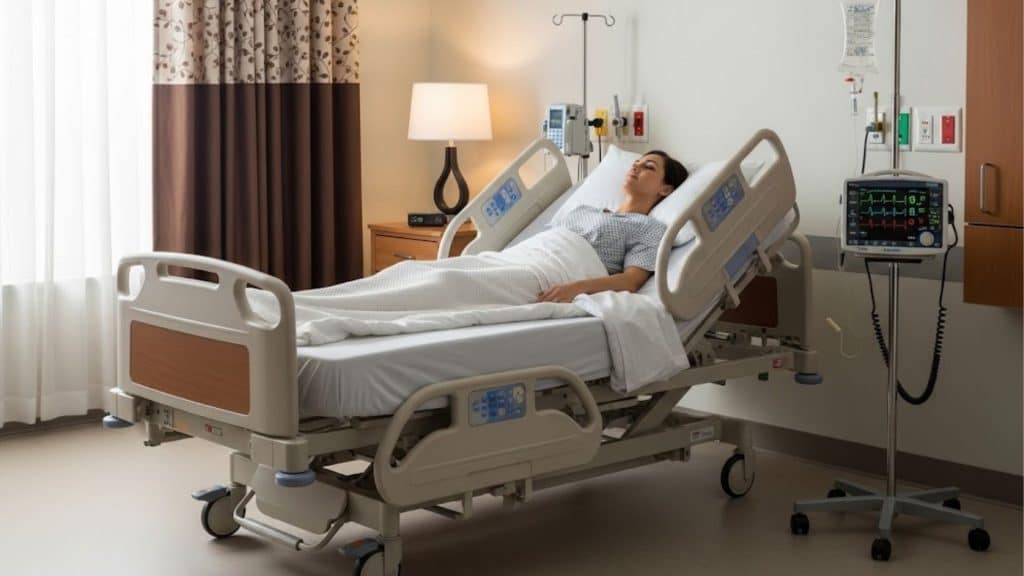Are you planning to bring a hospital bed home but feeling confused about sizing? Getting the right hospital bed dimensions can make all the difference between comfort and chaos in your living space.
If you’re caring for a loved one or planning for your own recovery, understanding bed sizes helps you make smart choices. Hospital beds aren’t just for hospitals anymore – they’re becoming popular for home care across the country.
I’ll walk you through everything from basic measurements to choosing the perfect fit for your specific needs and room layout.
You’ll find detailed information about different bed types, smart space planning tips, and helpful accessories that make life easier. By the end, you’ll know exactly which bed fits your home perfectly!
What are the Standard Hospital Bed Dimensions
Hospital beds come in a standard size that works for most patients. The typical bed measures 36 inches wide and 80 inches long.
This width gives patients enough room to move around comfortably. The length fits most adults without their feet hanging off the end.
Height adjustment is just as important as the bed’s length and width. Most hospital beds can move up and down between 16 to 36 inches from the floor.
This range helps both patients and medical staff. Patients can get in and out more easily when the bed is lower. Nurses and doctors can work better when the bed is at the right height for them.
Hospital Bed Dimensions for Home Use

Home hospital beds are usually smaller than regular hospital beds. They typically measure 36 inches wide and 80 inches long. Some models come in twin size at 35 inches wide and 75 inches long.
The main difference is in height and features. Home beds adjust from 13 to 30 inches high. This is lower than hospital beds because home floors are different. Hospital beds in medical centers are higher for staff convenience.
Home hospital beds also have simpler controls. They focus on basic head and foot adjustments. Weight capacity remains relatively consistent, ranging from approximately 350 to 500 pounds. The frame might be lighter for home use.
Variations in Hospital Bed Dimensions
Different types of hospital beds come in various sizes to meet specific patient needs. Each bed type has unique dimensions and features designed for particular situations or age groups.
1. Bariatric Beds
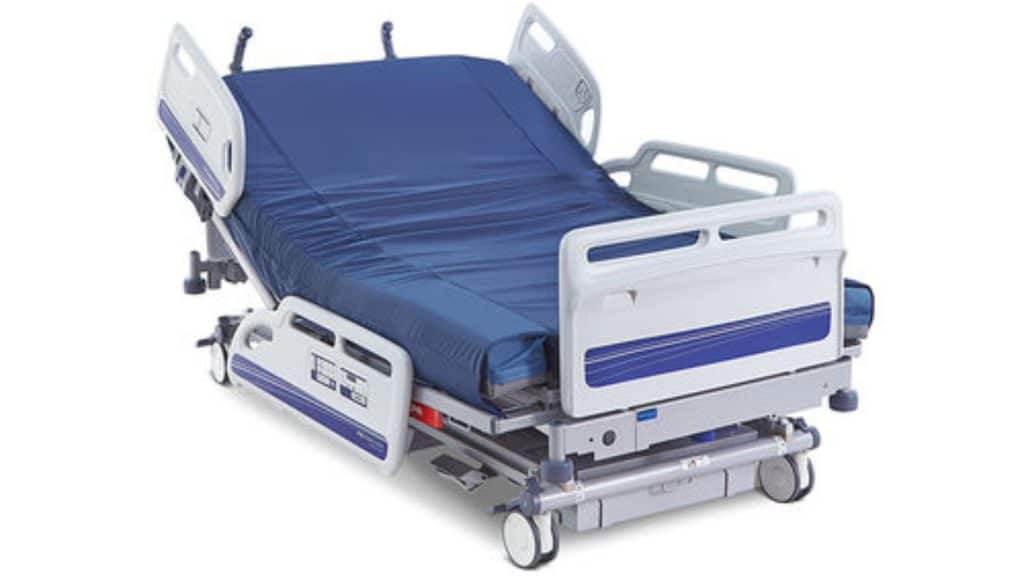
Bariatric beds are specially designed for heavier patients who need extra support and space. These beds have reinforced frames that can safely hold more weight than standard hospital beds.
The wider design gives patients more room to move comfortably. Healthcare workers also have better access when providing care to larger patients.
Dimensions:
- Width: 42 to 60 inches wide
- Length: 80 to 94 inches long
- Height: 18 to 30 inches (up to 36 inches)
2. Pediatric Beds
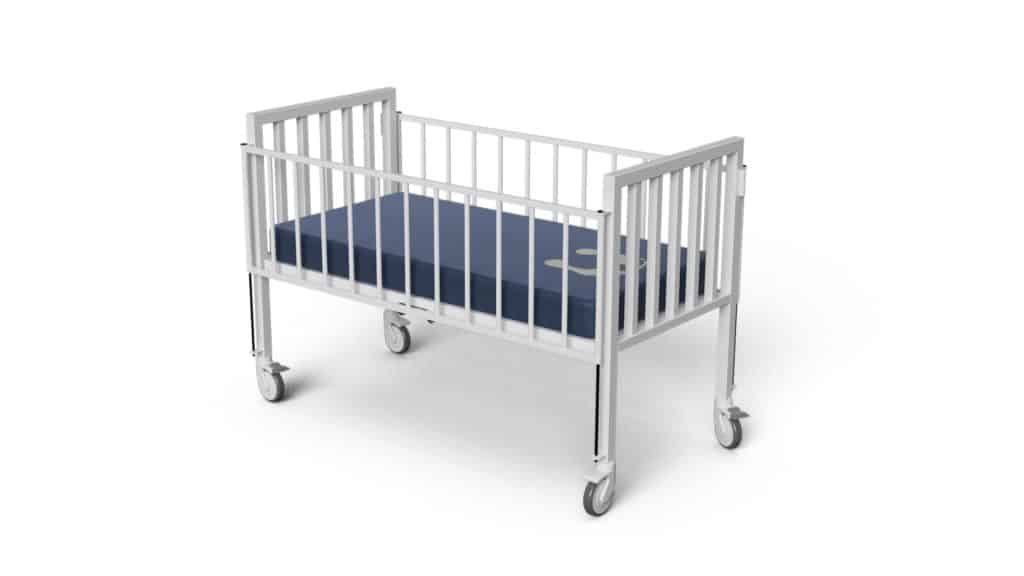
Pediatric beds are made smaller to fit children and young patients safely. These beds come with special safety rails that are higher than adult beds.
The compact size works well in smaller hospital rooms. Parents can stay close to their children while medical staff provides care easily.
Dimensions:
- Width: 21.5 to 32.3 inches wide
- Length: 43.3 to 60.4 inches long
- Height: 20 to 30 inches
3. Semi-Electric Beds
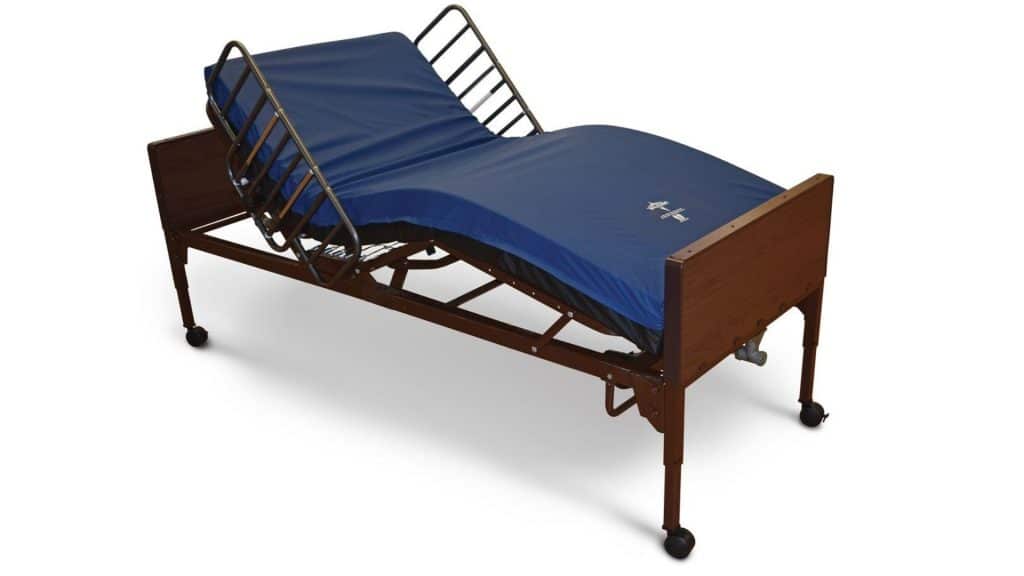
Semi-electric beds offer a good balance between features and cost for patients. The head and foot sections move with electric controls for easy adjustment.
However, the bed height must be changed manually using a crank. These beds are suitable for patients requiring some electric features, but not full automation.
Dimensions:
- Width: Around 36 inches wide
- Length: Around 80 inches long
- Height: 16 to 30 inches
How to Measure Space for a Hospital Bed
Measuring your space properly helps you choose the right hospital bed size. Follow these steps and make sure everything fits well in your room:
- Measure Bed Area: Mark out 36 inches wide by 80 inches long on your floor to see exactly where the hospital bed will fit.
- Add Walking Space: Leave at least 36 inches on three sides of the bed so caregivers and family members can move around safely and comfortably.
- Check Door Width: Measure all doorways the bed must pass through during delivery because most hospital beds need at least 32 inches of clear space.
- Plan Equipment Space: Reserve extra room near the bed for wheelchairs and medical equipment, since these items need about 5 feet of turning space.
- Test Access Routes: Walk the complete path from your front door to the bedroom to make sure there are no tight corners blocking delivery.
These measurements will help you pick the perfect bed for your space. Taking time to measure prevents problems when the bed arrives at your home.
How to Choose the Right Hospital Bed
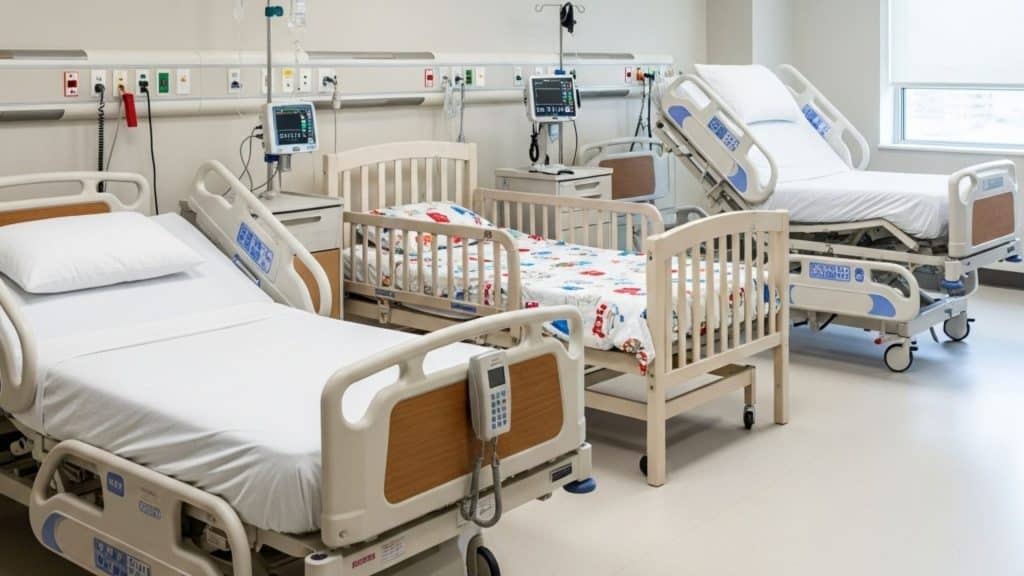
Picking the right hospital bed depends on the patient’s specific needs and health condition. Start by looking at the person’s height and weight to find the best fit.
For larger patients, bariatric beds work best because they’re wider and stronger. Children need pediatric beds that are smaller and have extra safety features like higher rails.
Consider how much the patient can move around independently. People recovering from surgery might need beds with more adjustment options. Patients who can’t move much need beds that tilt and turn easily.
See for any special medical equipment the patient uses regularly. The bed should make daily care easier for both the patient and their caregivers.
Hospital Bed Accessories
The right accessories make hospital beds more comfortable and easier to use. These items help patients rest better and make caregiving simpler for families.
- Hospital bed mattresses: Come in foam, air, and gel types that prevent bed sores and provide better support for patients.
- Fitted sheets: Made for hospital beds with deep pockets and elastic corners that stay in place when the bed moves up.
- Bed rails: Attach to the sides for safety and can be full-length or half-length, depending on the patient’s mobility needs.
- Overbed tables: Roll over the mattress so patients can eat meals, use laptops, or do activities while lying down comfortably.
- Trapeze bars: Hang above the bed to help patients pull themselves up and change positions without needing help from caregivers.
These accessories work together to create a safe and comfortable healing environment. Choosing the right ones depends on what the patient needs most for their recovery.
The Bottom Line
Now you have all the essential facts about hospital bed dimensions that really matter for your home setup. I’ve shown you standard sizes, special bed types for different patients, and how to measure your space properly.
The right bed size makes recovery much easier and keeps everyone safe during care time. Remember that quality accessories can make any hospital bed more comfortable for everyday needs.
Hospital bed dimensions might seem complicated at first, but you now have the knowledge to choose wisely.
If you need a bariatric bed or a pediatric option, you’re ready to make the best decision for your situation. Drop a comment below and share your hospital bed shopping experience!


